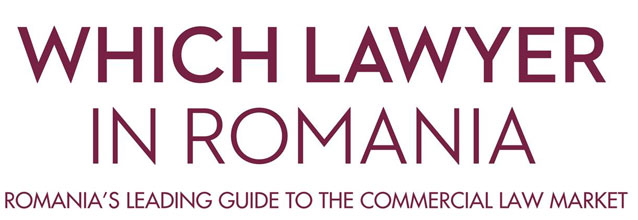
Article by Mateea Codreanu, Managing Associate and Gabriel Oprea, Senior Associate Musat si Asociatii.
After years of anticipation and waiting, 2023 appears to be the year in which crypto-assets, as major applications of blockchain technology in finance, will be finally regulated by the European Union („EU”) legislation, namely, by the Regulation on Markets in Crypto Assets (“MiCA Regulation”), which is susceptible to affect the rights, obligations and interests of many existing and future generation of businesses and investors across the globe.
Crypto-assets and its subspecies (e.g., cryptocurrencies and adjacent technologies) have captured both the attention and imagination of many mainstream companies, who perceived crypto-assets as a way to tap into new markets or to create them from scratch in new, virtual worlds (e.g., metaverse). Thus, it turned out that crypto-assets are a digital representation of value that one may transfer, store, or trade electronically, and not just virtual money.
As in the case of many internet/digital fast-expanding innovations, the rise of the crypto-assets has been appreciated, but in the same time heavily criticized by the public, people's reluctance being, at least for the moment, superior to their embrace. The lack of specific regulation in the crypto field has encouraged speculation and scamming to flourish and people who fell under the spell of overnight wealth became safe victims. Moreover, in practice, there are many voices who claim that many of the crypto-assets are just a new way of gambling.
A very known type of crypto-assets that has been a hot topic lately is the cryptocurrency, which represents a digital or virtual currency that is secured by cryptography, making it nearly impossible to counterfeit or double-spend, and operates on decentralized networks based on blockchain technology. A defining feature of cryptocurrencies is that they are not issued by a central authority, rendering them theoretically immune to arbitrary interference or manipulation. The stars of the cryptocurrencies are by far Bitcoin and Ethereum which gained many strength and popularity worldwide.
Nevertheless, the volatilely of the crypto industry keeps participants, observers and regulators on edge. For example, the quite recent event marked by the collapse of cryptocurrency exchange, FTX, has somehow reinforced the idea that the crypto space could be seen as ephemeral and not safe.
In this respect, it is crystal clear that there is a huge need for the crypto industry to rebuild people’s trust, in order for the positive aspects to overcome the related speculative bubbles.
Note should be made that virtual currency schemes has been under the scrutiny of authorities and institutions such as the European Central Bank (the “ECB”) since 2011, when the ECB started analysing the emergence of virtual currency schemes, anticipating increasing media coverage and in response to requests from the public, press and public authorities.
The assessment performed by the ECB led to the publication of several reports on virtual currency schemes, stating the general conclusion that although virtual currency schemes „can have positive aspects in terms of financial innovation and the provision of additional payment alternatives for consumers”, they also entail risks. Also, ECB held that „for the tasks of central banks, such as ensuring price stability and financial stability, the materialisation of these risks depends on the volume issued, the connection to the real economy, the volume traded and user acceptance”.
It should be stressed that in Romania, in principle, the position of the National Bank of Romania basically follows the approach of the ECB.
At the European level, the EU has already made significant strides to prevent the harm that could be caused by scams into the crypto world, by creating a uniform enactment (i.e., the MiCA Regulation), which will be applicable to all EU member states. However, regardless there was high expectation of the enthusiasts for the MiCA Regulation to be voted by the European Parliament in February this year, according to the lastest news, it appears that the voting has been delayed for April this year, which makes us wonder if the MiCA Regulation will indeed enter into force in 2023.
Moreover, even though the long expected MiCA Regulation addresses key crypto elements such as consumer protection, anti-money laundering (“AML”), environmental impact and business accountability, it may not prove to be sufficiently comprehensive, since some species of crypto-assets (e.g., NFTs) are not thoroughly analysed and regulated. Consequently, certain concepts will not be fully controllable, which may still entail potential risks.
NFTs are of particular importance since they are crypto-assets that can come in the form of art, music, in-game items, videos or more, and may be bought and sold online, frequently with cryptocurrency. Generally, they are encoded with the same underlying software as many crypto-assets. Therefore, they are prone to the same kind of abusive behaviour that plagues financial markets, such as price manipulation.
Currently, in Romania, the Parliament has not yet issued any legislation regarding the crypto space, save for few provisions related to the (i) tax on cryptocurrencies income and (ii) reporting to AML of certain transactions involving cryptocurrencies.
However, given that the EU has taken the first step by issuing the MiCA Regulation, it is highly probable that Romania, as a member state of EU, will uphold this phenomenon by ensuring stability in the crypto space through the adoption of collateral laws that should substantiate the European norm.
Nonetheless, given that the MiCA Regulation will be directly applicable in Romania, its practical implementation will, most likely, entail a transition period, which will be under the sign of many upcoming practical issues.
In this respect, by reference to the potential obstacles concerning applicability and heterogeneous interpretation, as experienced in similar situations, we deem that the Romanian legislative should considerate the following when issuing the enactments regulating the crypto field:
- clarity of the rules – the legislation should be exhaustive, sufficiently detailed and not subject to divert interpretation; this will ensure a proper understanding and an effective practical implementation;
- security and protection of the interests and rights of interested parties – this is vital both for consumers and businesses; therefore, systems and procedures to safeguard the security, integrity and confidentiality of information should be implemented;
- transparency – the need to ensure transparent and consistent lines of responsibility and effective processes to identify, manage, monitor and report the risks, including post-trade traceability.
In light of the above and having regard to the particularities of the Romanian market and the applicable legislation in force, subsequent legislation, norms and guidelines will play a very important role and will be most welcome by economic agents, consumers, attorneys and specialists.



 January 30, 2023 16:42
January 30, 2023 16:42 










